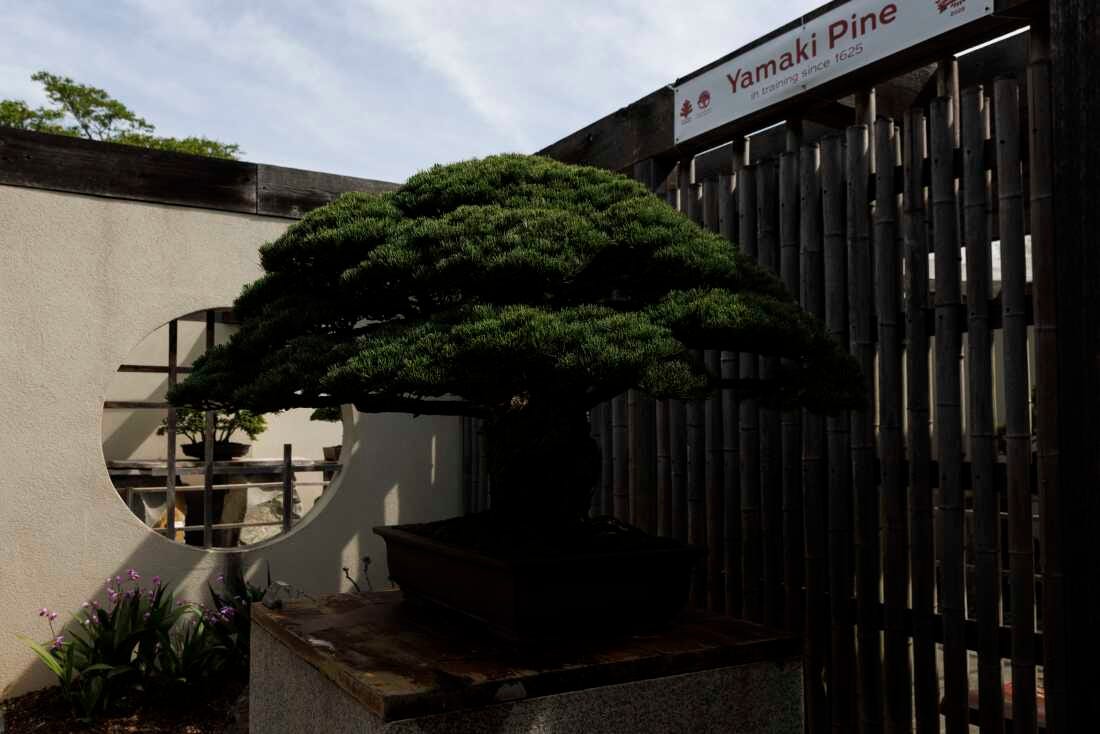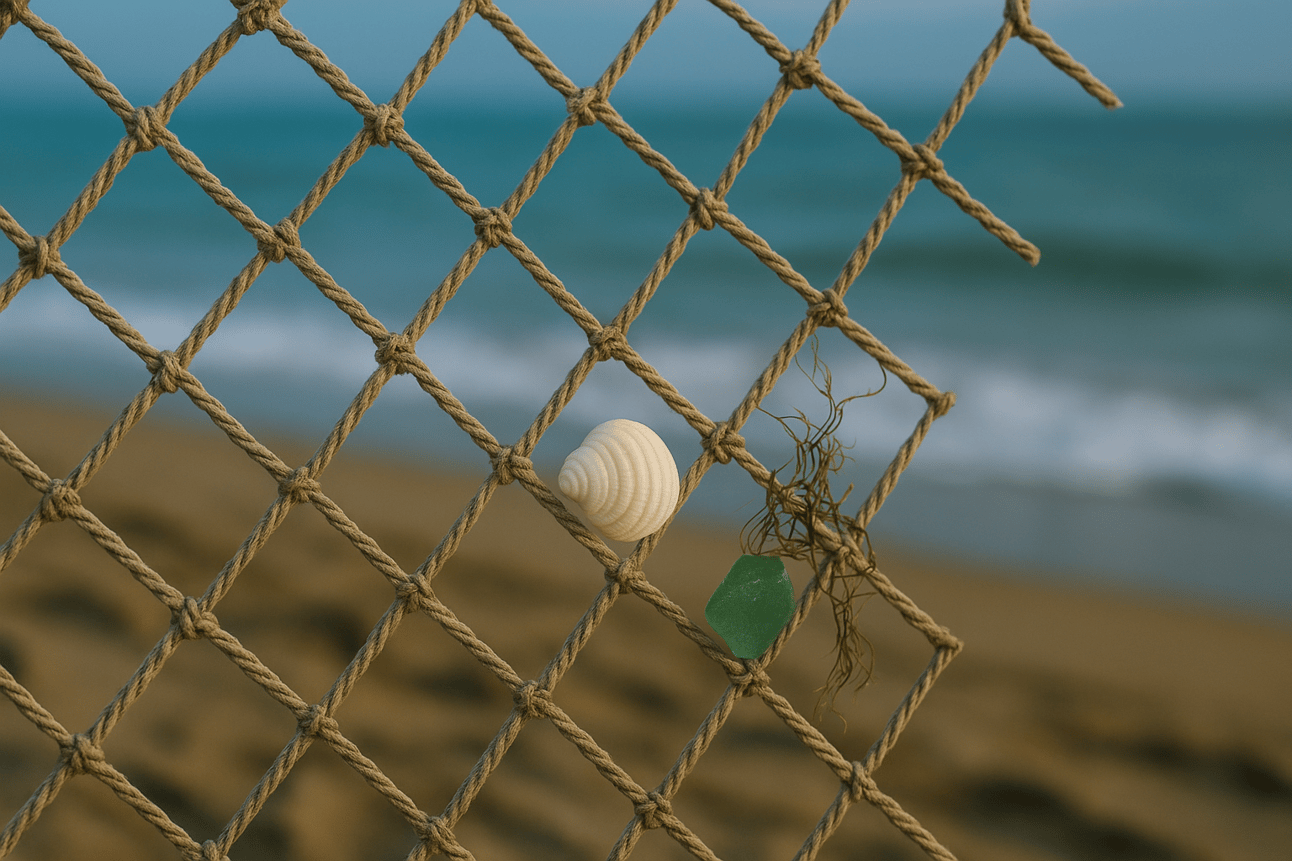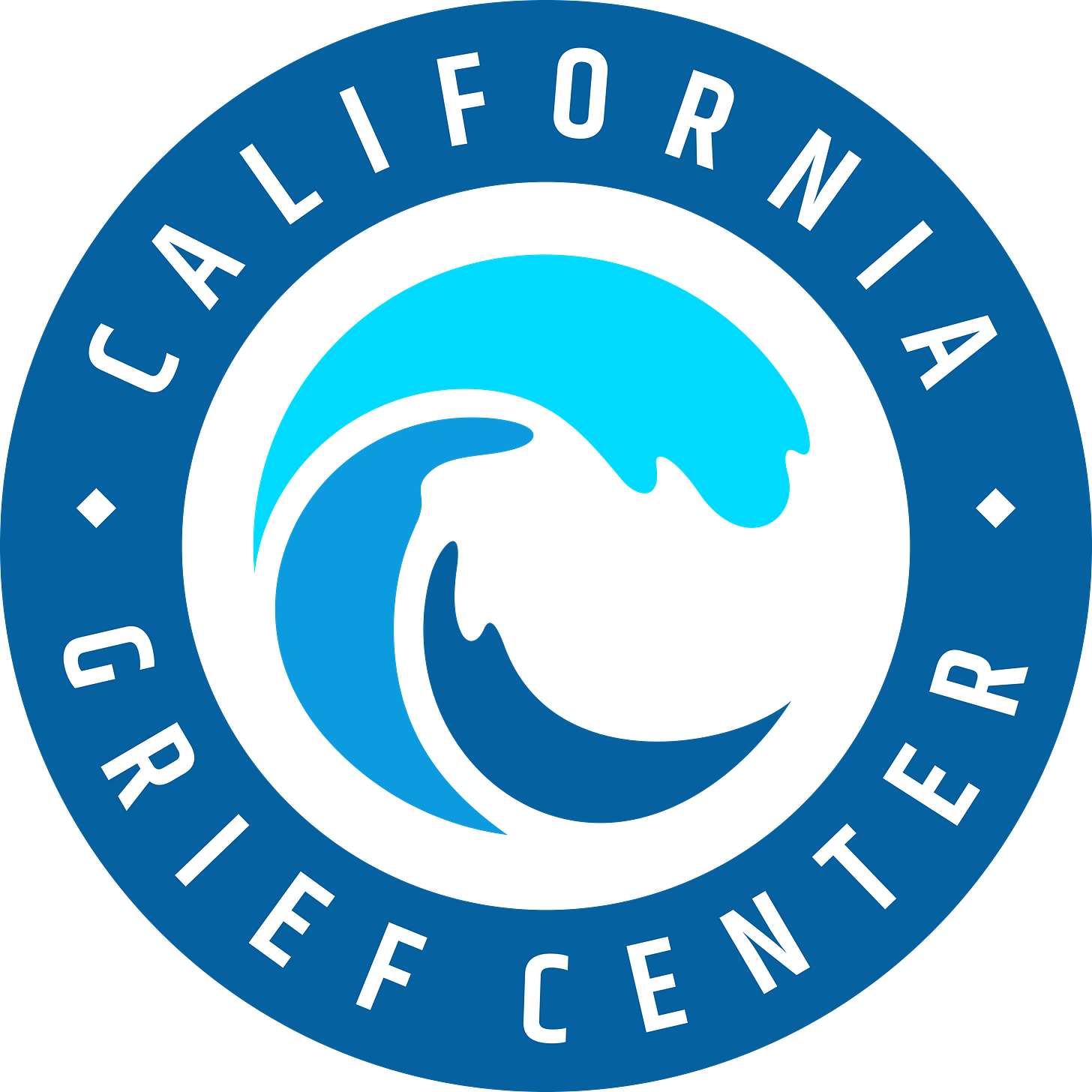By Brian Stefan, LCSW
California Grief Center | The Grief Wave
🌊 TL;DR
Violence has gone global. Not just weapons, but the very logic of destruction as a tool for achieving human ends. From nuclear arsenals that can end civilization to economic warfare that starves nations, from cyber attacks to climate devastation—we've woven a net where harm travels at the speed of light.
Yet in Hiroshima, a 400-year-old bonsai tree survived the atomic bomb and still grows today in Washington, D.C. It reminds us that even in our age of globalized destruction, something inexplicable endures.
We now know:
Violence spreads faster than ever, but so does the capacity for healing
Destruction has become democratized—and so has resilience
The same networks that carry bombs also carry medicine
What survives catastrophe often surprises us
We stand at a crossroads: Will we globalize annihilation, or will we learn to tend the small, stubborn things that refuse to die?
The tangled net we're pulling from the deep is soaked in blood. But life keeps finding a way to grow through the knots.
Facing the harm together
On August 6, 1945, at 8:15 AM, the world changed forever.
The Enola Gay dropped "Little Boy" on Hiroshima. In an instant, 80,000 people vaporized. Buildings melted. Rivers boiled. The age of nuclear warfare—and truly global destruction—had begun.
But in the Yamaki family nursery, less than two miles from ground zero, something impossible happened. A 400-year-old Japanese white pine bonsai, no taller than a child, survived. The blast knocked it over, buried it in debris, killed everything around it. But its roots held. Its ancient heart kept beating.
Thirty-one years later, in 1976, Masaru Yamaki gifted that bonsai to the United States as part of Japan's bicentennial gift. It now grows in the National Arboretum in Washington, D.C., tended by American hands, visited by millions who have no idea they're looking at a survivor of the atomic age.
The tree carries no resentment. It simply grows.
This is the strange alchemy of our globalized world: the same forces that spread unimaginable destruction also carry seeds of healing, forgiveness, and unexpected renewal. We live in an age where violence travels instantly across continents, but so does love. Where weapons of mass destruction threaten our survival, but global cooperation offers unprecedented hope.
We are all tending bonsai in the shadow of bombs.
Part I: When Destruction Went Viral
Violence is as old as humanity. But globalized violence—the ability to harm people you'll never meet, in places you'll never see, through systems you may never understand—that's new.
The atomic bomb was just the beginning.
For most of human history, violence was local. You hurt your neighbor, your tribe, perhaps the village across the river. Even the bloodiest wars required armies to march, ships to sail, proximity to matter. Death had geography.
Then came the Manhattan Project: the first truly global collaboration in the service of destruction. Scientists from across the Allied world—refugees from fascism, children of the Enlightenment, believers in progress—pooled their knowledge to build something that could end civilization itself.
They succeeded beyond their nightmares.
But nuclear weapons were just the first domino. Globalization didn't just move goods and ideas—it moved methods of harm:
Economic warfare became possible on unprecedented scales. A decision in a New York trading room could crash economies in Southeast Asia, starving millions who never heard of Wall Street. The 2008 financial crisis, born in American subprime mortgages, triggered unemployment and suicide from Iceland to Greece to South Korea.
Cyberattacks made distance irrelevant. A teenager in his bedroom could cripple power grids half a world away. The Stuxnet virus, likely created by the US and Israel, destroyed Iranian nuclear centrifuges without a single soldier crossing a border. Russian hackers influenced American elections. Chinese state actors steal intellectual property from German companies.
Information warfare turned truth itself into a weapon. Disinformation campaigns spread faster than viruses, turning neighbors against neighbors, democracies against themselves. The same social media platforms that connect families also radicalize terrorists and spread hate.
Climate destruction globalized environmental violence. Carbon emissions from wealthy nations drown islands in the Pacific, turn fertile lands to desert, send hurricanes spinning toward communities that contributed nothing to the problem.
We've become very good at hurting each other from very far away.
Part II: The Democratization of Destruction
Here's what's truly terrifying about our moment: violence has been democratized.
Once, only nation-states could wage real war. Now, a handful of people with internet access can bring down banks, poison water supplies, or crash airplanes. Terrorist groups like ISIS used social media to recruit globally and inspire attacks from Paris to San Bernardino. Criminal organizations traffic humans and drugs through networks that span continents.
The tools of mass destruction are increasingly accessible:
Chemical weapons can be synthesized with knowledge available online
Biological weapons become possible as genetic engineering democratizes
Nuclear materials proliferate as more countries develop atomic programs
AI warfare puts autonomous killing machines within reach of smaller actors
But the psychology runs deeper than technology. We've normalized violence as a problem-solving tool on a global scale. Nations routinely use economic sanctions—a form of collective punishment—to change other countries' behavior. Drone warfare makes killing as remote as playing a video game. Corporate pollution treats environmental destruction as an acceptable cost of doing business.
We've made violence efficient, distant, and somehow acceptable.
The same globalization that brought us smartphones and sushi also brought us the capacity for remote-controlled death. We can order dinner from across town with an app, and we can also order airstrikes from across an ocean with the same casual ease.
Part III: The Trauma That Travels
Violence has always created ripples. But in our interconnected world, those ripples become tsunamis.
Consider the Syrian civil war: What began as local unrest became a global catastrophe. Russian bombs, Iranian militias, American weapons, Turkish invasions, Israeli airstrikes. Millions of refugees fled to Europe, reshaping politics from Germany to Hungary to Brexit Britain. The crisis birthed new forms of far-right nationalism, changed election outcomes, and redrew the map of who gets to be human where.
Or the War on Terror: The September 11 attacks—planned globally, executed locally—launched two decades of global conflict. American wars in Afghanistan and Iraq created power vacuums that birthed ISIS. Drone programs spread from Pakistan to Somalia to Yemen. The surveillance apparatus built to fight terrorism became a tool for domestic control. A trauma born in Manhattan and Arlington spread like a virus, infecting policies and psyches worldwide.
Economic violence travels even faster. When Wall Street collapsed in 2008, unemployment surged in Spain, austerity devastated Greece, and suicide rates spiked across the developed world. The pain was felt most acutely by people who had nothing to do with creating the crisis—migrant workers, young people, families already struggling.
Climate violence is perhaps the cruelest: The carbon emissions that power wealthy lifestyles create droughts that starve subsistence farmers, hurricanes that flatten island nations, heat waves that kill the elderly poor. The people who contributed least to the problem suffer most from its consequences.
We've created a world where harm travels faster than healing.
But here's what's strange: trauma also creates unexpected connections. Survivors of different disasters find each other across oceans. Climate activists in the Arctic connect with flood victims in Bangladesh. The same networks that spread violence also spread solidarity, mutual aid, and the stubborn human refusal to accept that cruelty is inevitable.
Part IV: What Grows in the Ruins
The Hiroshima bonsai teaches us something crucial: life persists in ways we can't predict or control.
After every catastrophe, we discover what economist Joseph Schumpeter called "creative destruction"—but also something deeper. Not just new technologies or institutions, but new forms of human resilience, connection, and meaning-making.
Consider what survived World War II: The atomic bomb was humanity's most terrible invention. But the war also gave us the United Nations, the Universal Declaration of Human Rights, the World Health Organization. From unprecedented destruction came unprecedented cooperation.
The Holocaust nearly destroyed European Jewry. But it also created Israel, transformed global human rights law, and gave us the concept of "never again"—a moral commitment that transcends borders.
9/11 launched the War on Terror and surveillance state. But it also created new forms of interfaith cooperation, global activism against endless war, and a generation of Americans who questioned nationalism and embraced global citizenship.
The 2008 financial crisis devastated millions of lives. But it also sparked Occupy Wall Street, new forms of economic thinking, and a global conversation about inequality that continues today.
COVID-19 killed millions and isolated billions. But it also demonstrated global scientific cooperation (vaccines developed in record time), mutual aid networks, and our fundamental interdependence.
Even climate change—the ultimate global threat—has sparked the largest environmental movement in history, bringing together young people from every continent around a shared understanding that their futures are intertwined.
Catastrophe breaks things. But it also reveals what cannot be broken.
The bonsai survived Hiroshima not through strength, but through flexibility. Its roots ran deep, its core was solid, but its branches could bend without breaking. It adapted to impossible circumstances and kept growing.
Part V: The Networks of Resilience
The same forces that globalized violence are globalizing resistance.
Information networks that spread hate also spread hope. The same platforms that radicalize terrorists also organize climate strikes, coordinate disaster relief, and connect survivors of trauma across continents.
Economic networks that enable exploitation also enable unprecedented philanthropy. Billionaires' wealth is increasingly deployed globally for public health, education, and poverty reduction. Microfinance connects small lenders to small borrowers across oceans.
Cultural networks that homogenize also preserve. The internet that threatens local languages also helps communities document and revive them. Social media that spreads American pop culture also amplifies indigenous voices, marginalized perspectives, and alternative ways of being human.
Scientific networks collaborate across borders on an unprecedented scale. Climate research, pandemic response, nuclear safety—the biggest challenges require global cooperation, and we're learning to provide it.
The tangled net that carries bombs also carries medicine.
Consider how global networks responded to COVID-19: Scientists in China sequenced the virus genome and shared it globally within days. Researchers worldwide collaborated on vaccines in real-time. When vaccines were developed, global supply chains distributed them (however imperfectly) to billions of people. The same globalization that helped the virus spread also created the tools to fight it.
Or consider how the world responded to Russia's invasion of Ukraine: Global financial networks isolated the aggressor. Communication networks enabled real-time documentation of war crimes. Supply networks delivered weapons to defenders and aid to refugees. The same connectivity that enables warfare also enables solidarity.
We're learning to weaponize interdependence against those who would exploit it.
Part VI: Tending the Forest
The Hiroshima bonsai now lives in a different world than the one that nearly killed it. The United States and Japan—former enemies—are now allies. The technologies that created atomic weapons also created medical isotopes, clean energy, and space exploration. The international order born from World War II, however flawed, has prevented nuclear war for 80 years.
The tree has grown in the soil of transformation.

But we're not done yet. We live in a world where nuclear weapons still exist, where climate change accelerates, where new forms of violence emerge faster than new forms of peace. The tools of destruction become more powerful and more accessible every year.
So what do we do?
We tend the forest, not just the trees.
Individual resilience matters—the deep roots, flexible branches, and stubborn life force that the bonsai represents. But in a globalized world, survival requires collective resilience. Networks of mutual aid. Systems of cooperation. International laws with teeth. Global institutions that can respond to global challenges.
We need to globalize care as efficiently as we've globalized harm.
This isn't naive optimism—it's practical necessity. In a world where anyone can hurt everyone, everyone must be invested in protecting everyone. When violence goes global, so must healing. When destruction becomes democratized, so must the tools of renewal.
The bonsai survived because its roots ran deep and its ecosystem supported it. The same must be true for humanity. We need deep roots in our communities, flexible branches that can bend without breaking, and global networks of care that ensure no one faces catastrophe alone.
Closing: The Garden at the End of the World
The Hiroshima bonsai will outlive us all. It survived the atomic age, and it will likely survive whatever comes next. Not because it's invulnerable, but because it embodies something that transcends the logic of destruction: the simple, stubborn insistence on continuing to grow.
That's our choice, too.
We can use our global networks to spread violence, exploitation, and despair. Or we can use them to spread healing, justice, and hope. The same technologies, the same connections, the same human ingenuity—all waiting for us to choose what to do with them.
The net we're pulling from the deep is indeed soaked in blood. It carries the capacity for unimaginable harm, the tools of our potential extinction, the systems that have caused immeasurable suffering.
But it also carries seeds. Medicine and music. Stories and solidarity. The accumulated wisdom of every culture, the combined knowledge of every scientist, the shared dreams of every child who wants to grow up in a better world.
We are all gardeners now, tending impossible forests in the shadow of annihilation.
The question isn't whether we can eliminate violence—we can't. The question is whether we can cultivate something stronger: the networks of care that help life persist even in the worst circumstances, the systems of cooperation that make violence less necessary, the stubborn human commitment to growth even after everything has been destroyed.
The bonsai teaches us that survival is possible. But survival alone isn't enough. What matters is what grows in the space between destruction and renewal.
May we have the wisdom to tend it well.
✨ The next edition of The Tangled Net arrives next week.
May you move through this week with gratitude for every word you know, curiosity about the ones you don't, and reverence for the countless ways humans have learned to speak their hearts.
💛 If your own net feels too heavy to hold alone, we're here.
The California Grief Center offers support for individuals, couples, families, and organizations — across California and virtually nationwide.
Sources Cited:
Rhodes, R. (1986). The Making of the Atomic Bomb. Simon & Schuster.
Kaldor, M. (2012). New and Old Wars: Organized Violence in a Global Era. Stanford University Press.
Singer, P. W. (2009). Wired for War: The Robotics Revolution and Conflict in the 21st Century. Penguin Press.
Rid, T. (2020). Active Measures: The Secret History of Disinformation and Political Warfare. Farrar, Straus and Giroux.
Klein, N. (2007). The Shock Doctrine: The Rise of Disaster Capitalism. Metropolitan Books.
Lifton, R. J. (1967). Death in Life: Survivors of Hiroshima. Random House.
Solnit, R. (2009). A Paradise Built in Hell: The Extraordinary Communities That Arise in Disaster. Viking.





